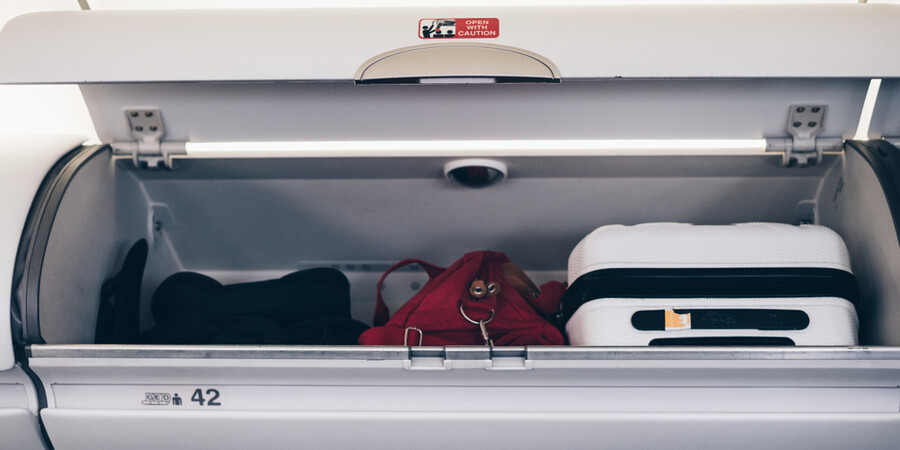Corporate travel has become an indispensable part of business proceedings. Therefore, travelers should be aware of the rules and regulations of airplanes. One such rule that every traveler should know is baggage allowances. Baggage allowance refers to the limits on the weight, size and number of bags that are allowed per person during the air travel. The limit is set to accommodate every passenger’s need while saving on fuel to carry the weight from boarding station to the destination. Understanding these kinds of allowances will help travelers ensure a smooth and hassle-free journey.
In general there are two types of baggage allowance: Checked baggage and carry-on luggage allowance. Let us understand each one of them in detail:
What is checked baggage?
Checked baggage allowances is the luggage that passengers have to get checked into the cargo of the airplane. Passengers can’t access the luggage till the airplane doesn’t reach the destination. This luggage allowance enables passengers to carry essential items such as clothing, medicine, personal belongings and more. One should know the checked baggage allowance policies in detail to avoid fines and problems during travel.
Checked baggage policies
Most of the policies remain the same, but individual airlines maintain specific policies for checked baggage allowance. The restrictions include the number of bags, size limits, and prohibited items.
Weight limits
Typically, weight limits for checked baggage are around 50 pounds (23 kilograms) per bag.
Some airlines can allow less or more weight per bag. Airlines may charge extra fees in case the weight of the bags are more than the permissible limit.
Pro Tip: Passengers should weigh their luggage before heading to the airport to avoid overweight fees or carry less luggage to avoid any interruptions.
Size restrictions
Oversized bags may incur additional fees or be rejected at check-in. Passengers should ensure that their luggage meets the size requirements of the airline they are traveling with.
Prohibited items
Airlines prohibit certain items that passengers are not allowed to carry on the airplanes such as firearms, several electronics, hazardous materials, and more.
Passengers should go through the list of prohibited items before checking in their luggage to avoid any kind of issue or legal actions.
Tips for packing checked baggage allowance
- Check the airline’s baggage policy
- Make a packing list of essentials
- Use packing organizers or compression bags for extra rooms in the bag
- Pack versatile clothing with better matching capabilities
- Consider shipping bulkier items ahead of flight
- Leave room for souvenirs
Suggested Read: A Guide To Efficient Business Traveler Luggage Packing
What is a carry-on baggage?

Carry-on baggage is defined as the luggage or bags that a passenger is allowed to bring onto a plane. The passengers should store the carry-on baggage in the overhead compartment or under the seat in the front of them. The baggage generally includes one hand bag, laptop bag, purse or such carry-on bags. Just like the checked in baggage there are several restrictions on the carry-on baggage.
Size and weight restrictions for carry-on baggage
Similar to the checked in baggage, there are different rules of various airplanes on the carry on baggage. In general the size of the carry on baggage should not exceed
22 x 14 x 9 inches. Also, the standard weight limit of carry-on bags is around 22 pounds (10 kg).
Prohibited items for carry-on baggage
There are certain items that are not allowed in carry-on baggage, such as liquids over a certain amount, sharp objects or items that may interfere with the safety of flight and others. It’s important to check the airline’s list of prohibited items before packing the carry-on baggage to avoid having any items confiscated at the security checkpoint.
Tips for packing efficiently in a carry-on bag
- Pack only the essential things that you may need during the trip
- Keep clothes and other important items in the checked in baggage
- Make sure to keep the carry-on baggage with you at all times to avoid misplacement or theft
- Ensure not to keep any prohibited item in your carry on bags and get through safety checks without any hassle
Baggage allowance and sustainability
Airplanes are responsible for producing a huge amount of carbon footprints. Hence, to maintain a sustainable future, they keep on evolving their policies. One such way is to reduce the baggage weight as the more the weight an airplane carries the more fuel would be required. To reduce the impact of airplane passengers should pack lightly and follow the baggage policies righteously.
Conclusion
Baggage allowance and the related policy helps passengers know the baggage weight, size and packaging requirements. An efficient baggage policy maintains a balance between the passengers comfort and environmental impact of the luggage. One should make sure to pack according to the rules laid down by the airlines to avoid any major inconvenience during the trip.
Suggested Read: How To Progress Towards Sustainable Business Travel
Baggage Allowance FAQs
What is the weight limit of checked in baggage?
It differs from flights to flights but the average weight allowance is 23 kilograms.
What are weight requirements of carry on baggage?
The weight limit is around 10 Kgs depending upon the airlines.
What are prohibited items on a flight?
Anything that will cause problems with the customs and endanger the other passengers is not permitted on the airplane.



